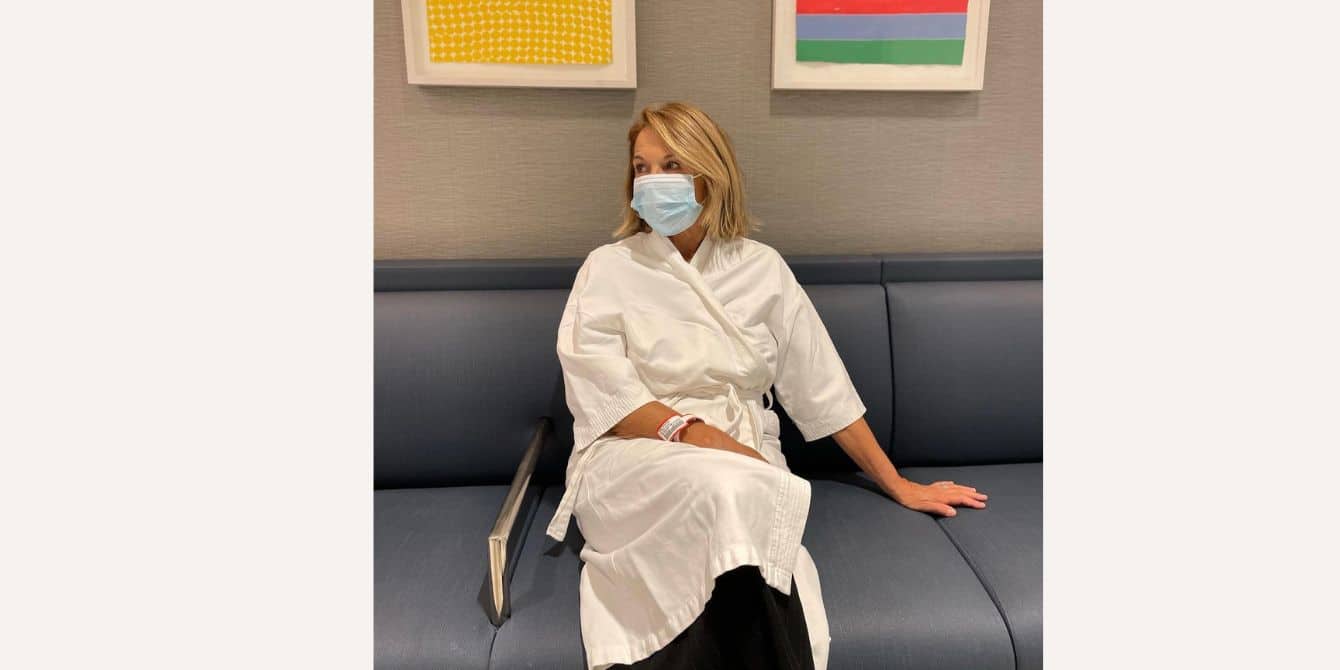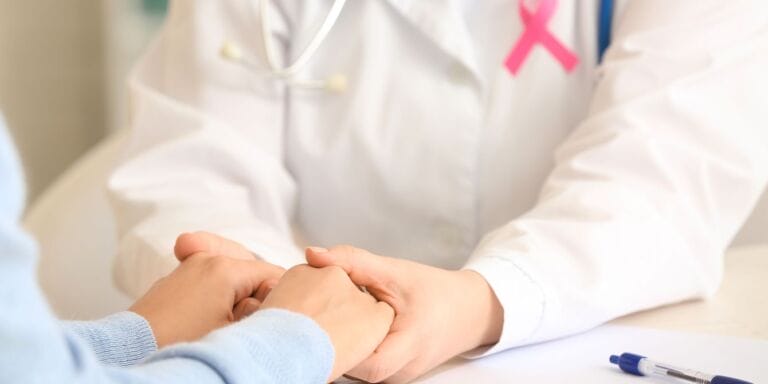Katie Couric reveals she was diagnosed with breast cancer after missing a mammogram

Instagram.com/katiecouric
"Please get your annual mammogram. I was six months late this time. I shudder to think what might have happened if I had put it off longer."
Table of Contents
In a personal essay penned on her site, Katie Couric announced this week that she was diagnosed with stage 1A breast cancer in June and has just completed radiation treatment. The journalist has been an outspoken advocate for preventative cancer screening since she was famously filmed undergoing a colonoscopy after the death of her first husband, Jay Monahan, from colon cancer in 1998, but missed a routine mammogram.
“I’m normally vigilant, bordering on neurotic, about taking care of my health,” she writes. But was she shocked to hear from her gynecologist that she hadn’t had a mammogram since December 2020. After her colonoscopy segment aired in 2000, Couric notes that the number of people getting colonoscopies increased by 20%.
Related: Pregnancy after breast cancer: What an expert wants you to know
Couric hopes that opening up about her breast cancer diagnosis might help other people feel emboldened to be proactive about their cancer screenings, too.
“Please get your annual mammogram,” Couric urges. “I was six months late this time. I shudder to think what might have happened if I had put it off longer. But just as importantly, please find out if you need additional screening.”
Making the call
Couric shares that, aside from her husband, others in her family have battled cancer, too. Her sister Emily died of pancreatic cancer at 54, and her mother-in-law Carol passed away after fighting ovarian cancer.
“But breast cancer—that was a new one; I had practically become an expert on colon and pancreatic cancers, but no one in my family had ever had breast cancer. During that 24-hour whirlwind, I found out that 85 percent of the 264,000 American women who are diagnosed every year in this country have no family history.”
Related: Breast health: 9 important facts every woman needs to know
She fretted about calling her daughters, Ellie and Carrie, with the news. “They’d already lost one parent. The idea of losing another was unfathomable,” she writes.
Thankfully, Couric’s cancer was highly treatable, which meant she was able to forgo chemotherapy but did undergo radiation. “I was warned that I may be fatigued and my skin may turn a little pink. Yesterday was my final round. My left breast does look like I’ve been sunbathing topless, but other than that, I’ve felt fine.”
Breast cancer screening guidelines may not be standard
“I really wanted to use this as an opportunity to remind so many women who put off their mammograms during the pandemic,” Couric said to The New York Times. “The bottom line is the earlier you detect it, the better.”
But it’s worth noting that mammograms are not 100% accurate. Because of the potential for false positives and overdiagnosis with routine mammograms, screening schedule recommendations may differ among medical associations—and physicians.
Couric states that she, like 45% of women in the U.S., has dense breasts, which can make it especially difficult for mammograms alone to detect abnormalities. In addition to mammograms, Couric typically gets a routine ultrasound to look for any abnormalities, but not all doctors take this step.
Related: What not to say when your friend has breast cancer (and what to say instead)
“Currently, 38 states require doctors to notify their patients if they have dense breasts. But often that information doesn’t clearly convey the need to have a supplemental screening or this very important fact: The denser your breasts, the higher your risk of cancer,” she writes.
“In 2019, the FDA proposed federal legislation that would make the language and guidance more specific, but the agency has been dragging its feet. Let’s get a move on, folks.”
What’s more, the majority of states still don’t require insurance companies to fully or even partially reimburse patients for breast ultrasounds.
The American Cancer Society breast cancer screening guidelines
The ACS recommends the following screening schedule for women with average risk of breast cancer. (Average risk of breast cancer is considered having no personal history, no strong family history, no BRCA-gene mutation or previous chest radiation before age 30.)
- Women between 40 and 44 have the option to start screening with a mammogram every year.
- Women 45 to 54 should get mammograms every year.
- Women 55 and older can switch to a mammogram every other year, or they can choose to continue yearly mammograms. Screening should continue as long as a woman is in good health and is expected to live at least 10 more years.
- All women should understand what to expect when getting a mammogram for breast cancer screening—what the test can and cannot do.
- Clinical breast exams are not recommended for breast cancer screening among average-risk women at any age.
The American College of Obstetricians and Gynecologists breast cancer screening guidelines
ACOG recommends the following screening schedule for women at average risk of breast cancer:
- Beginning at the age of 40, women should have a mammogram every 1 to 2 years.
- If women have additional risk factors for breast cancer, such as a family history of the disease, they may need additional screenings.
- If women have not started screening in between the ages of 40 and 49, mammography should begin no later than age 50.
- Screening should continue until at least age 75 years.
- Clinical breast exams may be offered every 1 to 3 years for women between the ages of 25 and 39 and annually for women aged 40 and older, after a discussion about the uncertainty of additional benefits and harms.
Guidance on clinical and self-breast exams
Most large medical organizations don’t recommend routine clinical or self-breast exams. But the guidance here is puzzling, because checking out a lump you discovered on your breast could lead to early detection, which can drastically improve treatment and survival outcomes.
“While the American Cancer Society does not recommend regular clinical breast exams or breast self-exams as part of a routine breast cancer screening schedule, this does not mean that these exams should never be done,” states ACS. “Women should be familiar with how their breasts normally look and feel and should report any changes to a health care provider right away.”
Related: How to perform a self-breast exam and what to look out for
The American College of Obstetricians and Gynecologists (ACOG) also recommends a general sense of “breast self awareness,” defined as a woman’s awareness of the normal appearance and feel of her breasts, but not a breast self exam. “Breast self-examination is not recommended in average-risk women because there is a risk of harm from false-positive test results and a lack of evidence of benefit,” ACOG states.
Be your own advocate
It’s best to talk to your doctor about your personal breast cancer risk and the benefits and harms of breast exams and routine screenings. If you’re concerned about something, don’t hesitate to bring it up: Self-advocacy can be life-saving.
“I can’t tell you how many times during this experience I thanked God that it was 2022. And how many times I silently thanked all the dedicated scientists who have been working their asses off to develop better ways to analyze and treat breast cancer,” Couric writes. “But to reap the benefits of modern medicine, we need to stay on top of our screenings, advocate for ourselves, and make sure everyone has access to the diagnostic tools that could very well save their life.”





































